News
Designing for Resilience: Lessons from the Waterbury State Office Complex
August 9, 2023
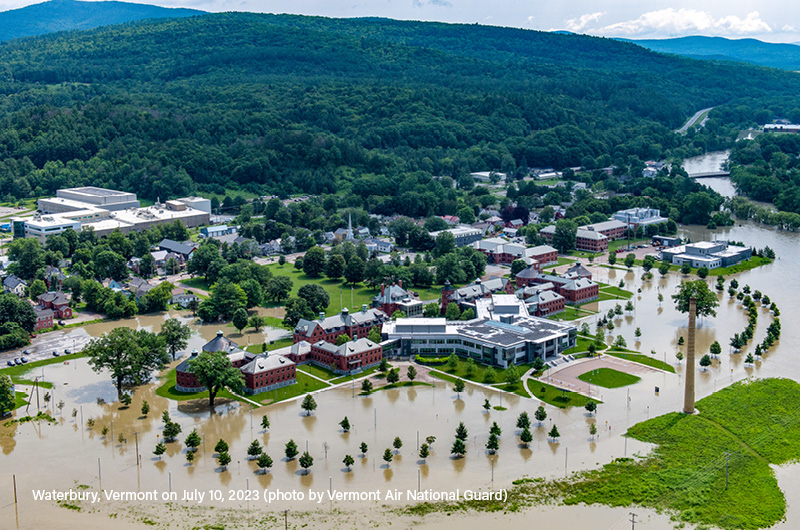
On July 10, 2023, a powerful storm dropped as much as nine inches of rain on parts of Vermont, causing extensive flood damage across the state. Preliminary data from Vermont’s Emergency Operations Center show over 4,000 homes and 800 businesses suffered serious damage from the storm – a number very similar to what the state experienced after the last big flood, caused by Tropical Storm Irene, in 2011.
It has been heartbreaking to see the damage caused in places like Montpelier and Ludlow, where the storm hit hardest. But there have been signs of hope, too, as systems put in place after the 2011 flood worked as intended.
One of those places is the Waterbury State Office Complex, which sits near a wide bend in the Winooski River. When Irene hit in 2011 nearly every building on the 100-acre historic campus was severely flooded. Roughly half of all structures on the site—22 buildings with over 300,000 square feet of space—were eventually torn down because they were not worthy of repair.
When it came time to rebuild, protecting the complex against future floods was a top priority. This meant designing for resilience, a set of practices that helps buildings and landscapes bounce back quickly when disaster strikes.
At Waterbury resilience took two main forms. The first involved major site and landscape modifications designed to lessen the impact of future floods. Land close to the river was lowered by three feet or more in several locations to allow flood water to be “stored,” much like a giant bathtub, and not overflow onto higher ground. At the same time, land designated for new construction was raised to six inches above the 500-year flood plain. Buildings at this elevation have a 0.2 percent chance of flooding in any given year.
It was on this higher ground where the state built a new central plant and an 86,000 square foot office building. The central plant replaced a century-old facility near the water’s edge and included all-new electrical and sewer services. The new office building consolidated staff from multiple buildings and was neatly connected to the “historic core,” a handsome collection of 12 buildings that originally served as the Vermont State Asylum for the Insane.
These gorgeous buildings, each listed on the National Register of Historic Places, had been the public face of the campus since the 1890s. Preserving them for future generations required “dry floodproofing,” which entailed filling basements with lightweight concrete and sealing off ground-level openings to keep water out.
At around $130 million, rebuilding the Waterbury State Office Complex was the most expensive state construction project ever undertaken. And it was worth it.
When the banks of the Winooski River overflowed on July 10, 2023, much of downtown Waterbury was again under water. Dozens of houses and several businesses were filled with water and debris, but not the Waterbury State Office Complex.
“When you look at the aerial imagery, you’ll see both the road and the parking lots were inundated with water — but the buildings were fine,” said Jennifer Fitch, the state’s commissioner of buildings and general services, in a Vermont Digger article a day after the flood.
And by Tuesday evening the parking lots and roads on the Waterbury campus were mostly dry, thanks to innovative site and landscape improvements that allowed floodwaters to quickly drain back into the Winooski River.
The village of Waterbury likely benefited from improvements at the State Complex, too. Slightly more rain fell on Waterbury on July 9th and 10th (5.04 inches) compared to Montpelier, which recorded 4.72 inches of rain. The impact of that precipitation in Montpelier was devastating because the water had nowhere else to go but over city streets. In Waterbury, improvements made post-Irene allowed the river to spread out and slow down, resulting in lower water levels and much less flood damage overall.
Now what?
“Build back better” has been a common refrain from civic leaders following July’s floods, but what does that mean in practice? Public discussions of the issue range from moving entire towns to strategically removing individual properties deemed too close to the water’s edge.
Solutions will vary depending on individual and community needs, but a few basic principles hold in every case:
- Build connections: Work with professionals, neighbors, community partners, government, and aid organizations to understand options and strengthen response networks for the future.
- Design for simplicity: Simple systems are easier to maintain and repair.
- Design for durability: Quality materials and proven building techniques withstand environmental stressors better.
- Shop local: Regionally sourced materials are time-tested in the local environment and can be readily sourced in case of emergency.
- Tap into nature: design strategies that work in harmony with the natural environment tend to be more resilient and long-lasting.
- Plan for the future: With climate change accelerating, old weather patterns may no longer be valid.
- Project critical systems: Mechanical and electrical infrastructure should be placed out of harm’s way, above flood level.
- Choose green materials: Specify products that won’t leak hazardous or toxic substances into the environment in the event of a flood or fire.
- Plan for redundancy: Install backup systems for critical devices and equipment.
- Set priorities: Work in stages to improve systems over time, based on the specific needs of your building or community.
Natural disasters have always existed, but today extreme weather events are much more common because of global climate change. Designing for resilience is one way we can protect the places we love from future harm.
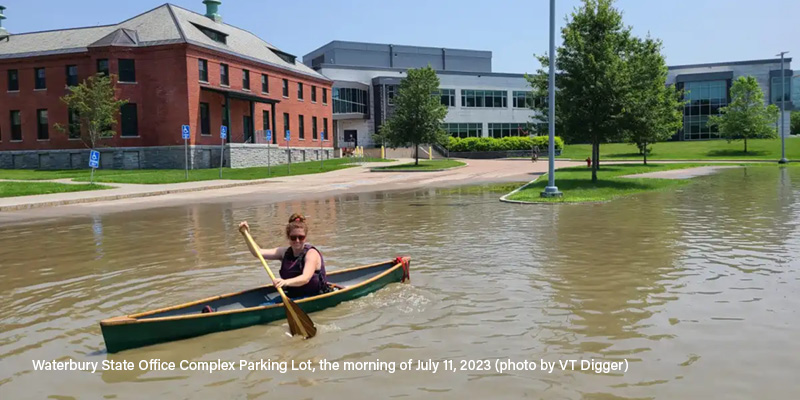
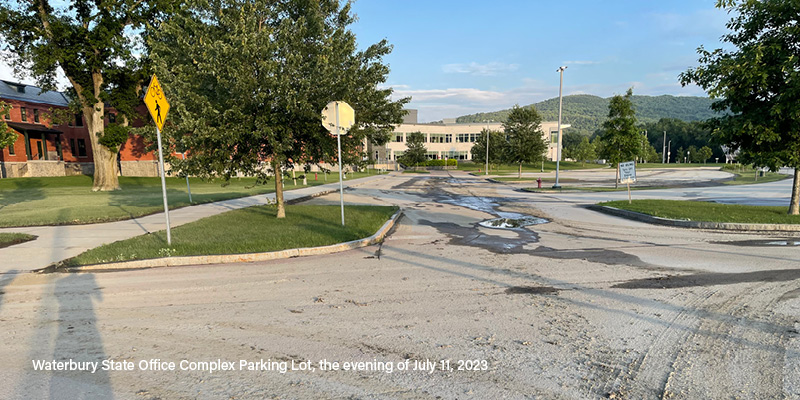
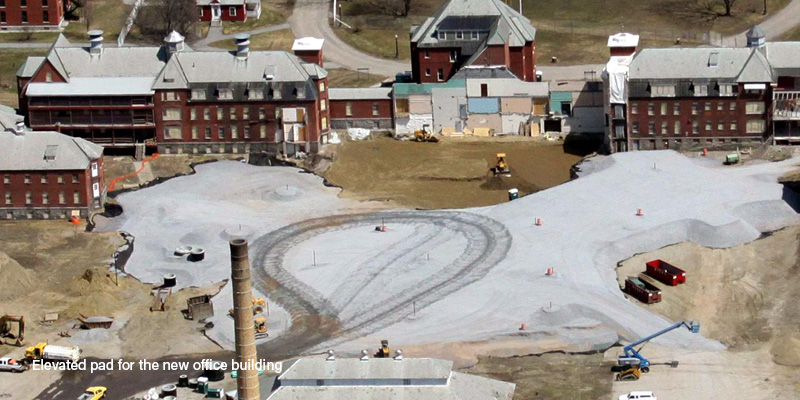
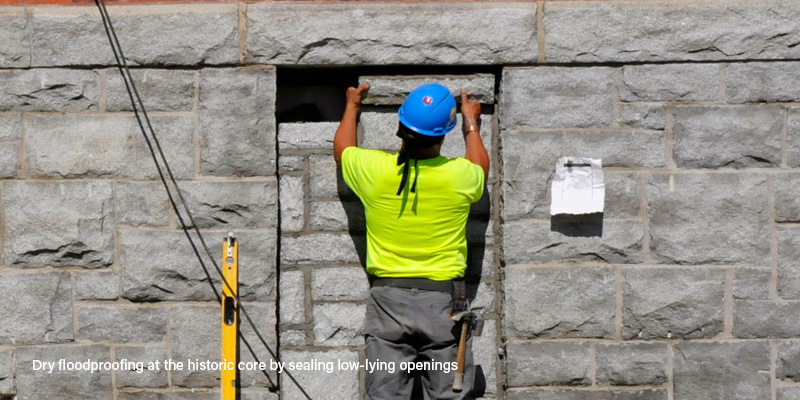
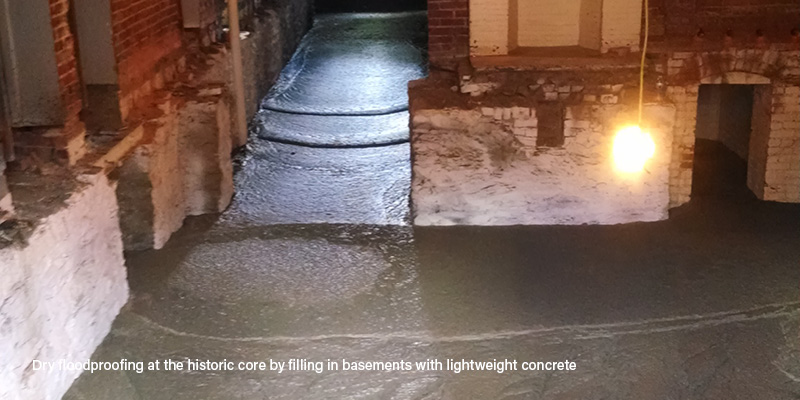
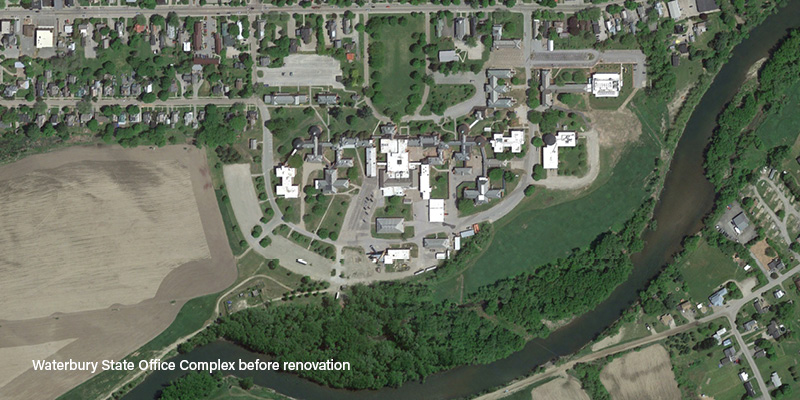
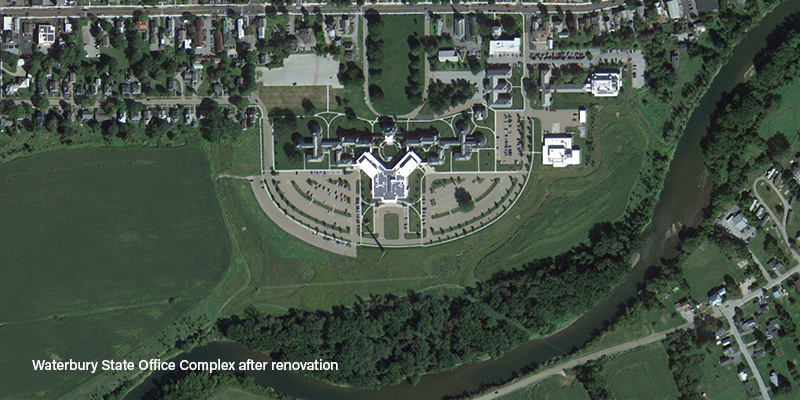
Back
Project Spotlight: The Montpelier Performing Arts Hub
On a quiet hilltop just minutes from downtown Montpelier lies a bucolic campus green, surrounded by...
